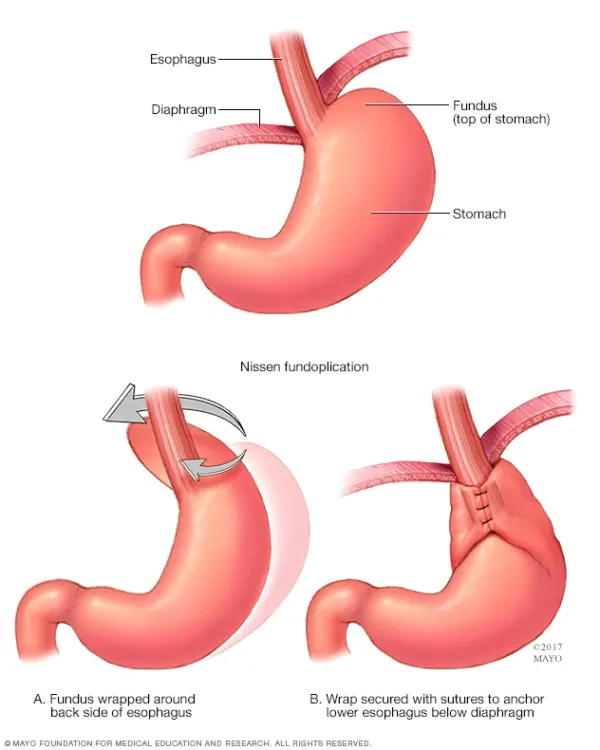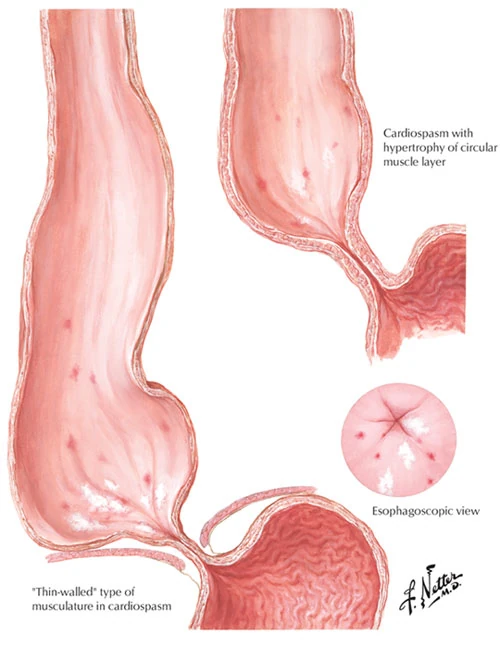Esophageal Motility Disorders
Achalasia
Esophagus is characterized by its capability to transfer food from mouth to stomach. This is achieved not only by gravity but also by the peristaltic movements of esophagus in coordination with the relaxation of the sphincter which exists just before stomach.
Autoimmune derangement of esophageal neurosis results in losing its capability of peristaltic movements and those are replaced by concurrent or absence of peristaltic movements.
Esophageal Motility Disorders
Gastroesophageal Reflux
Gastroesophageal reflux is a common situation, which may happen occasionally to anyone. In certain people, this happens often and may cause very annoying symptoms, which need daily medication. A very relaxed esophageal opening of the diaphragm causes it with the coexistence or not of a smaller or larger diaphragmatocele. Most people manage their symptoms well.


Esophageal Motility Disorders
Diaphragmatocele
Diaphragmatocele may be a part of the gastroesophageal reflux disease. If it is large enough and part of or the whole stomach and/or other abdominal organs, like bowel or spleen enter thorax, it may cause severe problems like dysphagia, vomiting, thoracic pain and shortness of breath.
